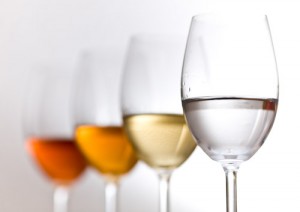
We Are Loving Liqueurs
The word Liqueur comes from the Latin liquifacere (“to liquefy”). This might seem a bit obvious or perhaps redundant, as Liqueurs, as we know them, are clearly beverages. However, it makes complete sense when understood in the context of the earliest Liqueurs. It was medicine that was being liquefied. Herbal preparations, often made by monks, were the ideal way to preserve the essential oils of medicinal herbs and spices. Sugar was added to make the medicine more palatable. We can find evidence of these early Liqueurs in text dating to the 12th century; they are likely older than this.
Today, Liqueurs come from nearly every alcohol-producing nation. Many of these styles and even the brands have been around for centuries while new styles are being created every year. They come in an amazing array of colors and in varying degrees of sweetness. Liqueurs capture the essence of herbs and spices, nuts, fruits, and dairy. Liqueurs’ diversity is rivaled only by their versatility.
Liqueurs defy definition, but we will do so anyway. They are Spirit-Based beverages with added flavors. Typically, this is achieved with an infusion or a simple maceration (like steeping tea). Both methods usually involve the addition of sugar to varying degrees. You will, at times, see Liqueurs and cordials used synonymously. This use of cordial is not only antiquated, it’s simply wrong.
To cite an example of where the line is drawn between other Spirits and Liqueurs, consider Calvados. Calvados is a brandy made by distilling a fermented beverage, cider. Apple Brandy or an Apple Liqueur is merely a Spirit flavored with apples and sweetened.
Pour Some Sugar on Me – Loving the Sweet in Liqueurs
Despite the advancement of the absurd notion that sweet drinks are unsophisticated, Liqueurs continue to thrive. Many of the world’s most popular Liqueurs are nearly iconic and inseparable from their place of origin. Can you imagine Greece without Ouzo? When sipping a Limoncello, you are virtually transported to Italy’s Amalfi coast or perhaps a café in Rome where you first experienced this sweet/tart drink. If you were asked to name the coffee Liqueur from Mexico or Ireland’s Whiskey-based cream Liqueur, you could likely do so easily.
Sampling Liqueurs
Today, Liqueurs are most often sipped for pleasure, but there is still a strong connection to health and well-being. Bitters, Sambuca, and Amaros, typically made in Italy, are proprietary infusions of spices, herbs, seeds, roots, and barks believed by many to aid in digestion. The driest versions of these Liqueurs are excellent aperitifs stimulating the appetite. Cream-based Liqueurs are a great way to close a meal; some believe that cream is desired for optimum digestion. Many will draw a firm line between aperitifs like Bitters and the after-dinner Liqueurs like Limoncello. I also like this distinction, but there is no argument that sugar plays a role in both styles.
Above all, Liqueurs are simply a desired beverage taken straight up, on the rocks, or as an essential element to a favorite cocktail. They are also integral to many popular and soon-to-be-popular desserts.
Liqueurs In Cocktails
America’s bartenders have a sweet tooth. Well, actually, it’s a semisweet tooth, or is that a bittersweet tooth? Okay, it’s definitely a bittersweet tooth, and one of its telling symptoms is a love affair with a set of new, classic, and glamorous Liqueurs.
Liqueurs have always been an integral element of the cocktail scene. Most often, Liqueurs play a supporting role in a cocktail, although their contributions are vital and impossible to miss. Imagine The Godfather II without De Niro, The Untouchables without Connery, or Goodfellas without Pesci. It is equally difficult to fathom the Sidecar sans orange Liqueur or the Negroni without Campari.
Our present cocktail renaissance parallels the great cocktail boom of the 1920s. Sadly, Americans were greatly handicapped by Prohibition as European bartenders created classic cocktails that are still relevant today. In both eras, Liqueurs were prized for their unique and concentrated flavors that add depth, color, and texture to creative cocktails. The most popular new Liqueurs of the past decade are now ingredients in countless drink recipes.
Inventing the next great Liqueur may seem like the path to fame and fortune. However, in the world of up-market liqueurs, it seems that slow and steady wins the race. In the case of Canton and St. Germain (two of the most popular Liqueurs of the past decade), they have become instant classics. It is important to remember that the category is far less fickle and fluid than other spirits categories. The classic brands of decades past are still the standards. Grand Marnier, Cointreau, Drambuie (along with their stellar 15-year-old version), Frangelico, and Chartreuse are as popular today as ever and are in a small, elite group of proprietary Liqueur creations. The top Vodka, Scotch, Bourbon, or Tequila from three decades past is not held in the same regard today. This is yet another reason to doubt a radical flood of brands in this category. As is the case with all of life’s pursuits, the masters make it look easy.
American writer Ogden Nash once famously said, “Candy is dandy, but liquor is quicker.” Liqueurs beg the question, “Why choose?”

This domain seems to get a good aonmumt of visitors. How do you promote it? It offers a nice unique spin on things. I guess having something real or substantial to post about is the most important factor.
Very good article on liqueurs, their history and uses. Thank you for publishing the information.